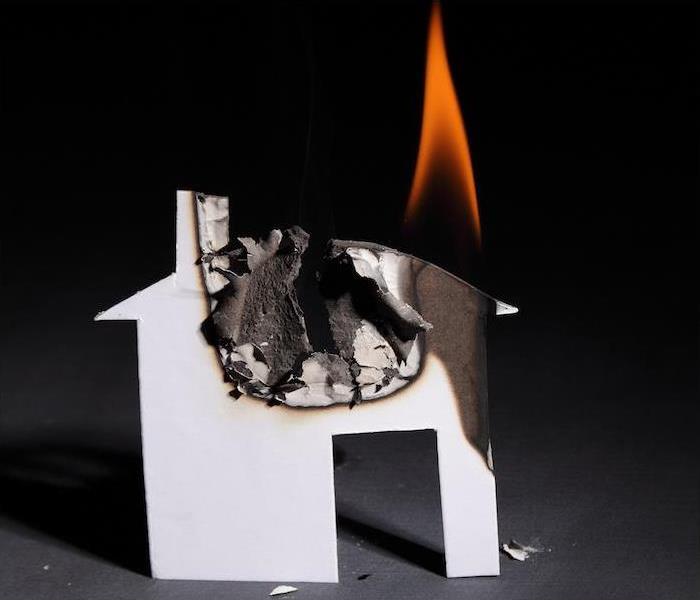Fire Science, With a Side of Geometry | SERVPRO® of Cedar Mill/Oak Hills
1/28/2022 (Permalink)
 If your home or business has any damage, SERVPRO of Cedar Mill/Oak Hills is ready around the clock to help you recover.
If your home or business has any damage, SERVPRO of Cedar Mill/Oak Hills is ready around the clock to help you recover.
Everyone knows about the scientific visual aid known as the water sphere. You don’t? Weird. How about the air rhombus—still no? Wow, did you test out of geometry or something? Surely you know the earth parallelogram though. Huh. Well, OK, guess we better start from the beginning.
First off…none of those are real.
But there is a scientific visual aid with an equally silly name, that serves as a way by which we can see the makeup of any fire, and which also give us insight into effective methods for putting fires out. It’s called, we kid you not, the fire tetrahedron.
The 3D pyramid-type shape has four equal sides, each of which represents one of the elements that composes every fire. And thus, each side also reveals to us something that can be used to fight every fire.
Yes, the fire tetrahedron is real, and it’s spectacular. Let’s see what it’s about.
The 4 Things a Fire Needs to Live
Fuel. Every fire has to consume something—to, as we would put it, destroy something. This is the fuel—the material that gets damaged, eaten away or otherwise gobbled up by the flames.
Heat. The degrees may vary, but every fuel source must reach and maintain a certain level of heat in order for combustion to begin and/or continue.
Oxygen. During the process of combustion, fires consume oxygen, removing it from the atmosphere. The fire converts the oxygen to carbon dioxide, and leaves an atmosphere rife with carbon monoxide in its wake.
Chemical Chain Reaction. The thing about fire is that it doesn’t simply want to spark; it wants to live and thrive. But in order for that to happen, all these things have to happen concurrently and continually. The chain reaction that occurs when fuel meets heat and oxygen is as vital to the fire’s success as any of the other three elements.
The 4 Ways to Stop a Fire
Cool it. Reimposing thermal balance on a fire’s fuel source (aka throwing water on it) is the most common way we put out fires. It takes a lot of cooling, but once the cooling rate overtakes the heat rate, the fire stops.
Smother it. Have you ever restarted a fire by blowing on it? That’s because the fresh infusion of oxygen gave it new life. When a fire runs out of, or is blocked off from, its oxygen supply, it’s done.
Starve it. If a fire was burning next to you and you didn’t want to get burned, you’d simply run away, right? That is you removing a potential fuel source away from the fire, depriving it of what it would need in order to spread to you. When all fuel is burned, there’s nothing left for the fire to consume.
Interrupt the chain reaction. It’s a complicated process, but a certain subset of chemicals and gases are able to undo part of the chemical reaction that keeps a fire alive, removing important links that spell out the end for a fire.
If the fire tetrahedron makes a wreck of your home or business, we’re ready around the clock to help you recover. Contact SERVPRO anytime for fast, thorough cleanup and recovery after a fire.






 24/7 Emergency Service
24/7 Emergency Service